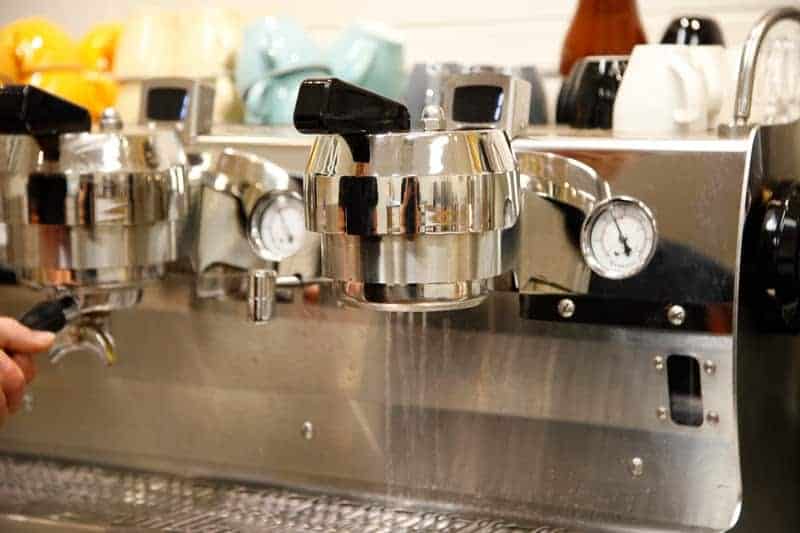Many factors go into producing a perfect espresso, but those cafes and individuals that truly excel at brewing excellent coffee share a few common traits, one of them being consistent cleaning techniques.
On busy days and in the hustle of morning rushes it’s easy to neglect hygiene practices. But the difference between a good coffee and an excellent coffee are a few simple steps.
Listed below are some common and not so common coffee machine cleaning tips that’ll help you produce the best possible results. We list every espresso machine part you need to clean:
- Purge between every single shot to remove any excess coffee grinds in the group head. Make sure to set one of your volumetric buttons for this function to make this step no hassle at all.
- Wipe off any left over coffee grinds in your portafilter with a dry cloth before grinding fresh coffee inside. Some people may recommend rinsing your portafilter in between shots, but this usually leads to a dripping portafilter, and a messy dripped upon workplace.
- Remove and clean the filter basket and wipe the inside of your portafilters a couple times a day. The frequency is up to you, but the more often the better. The build up of old, stale coffee residue affects the taste of your espresso.
- Make sure to wipe clean your steam wand and purge every time you steam milk. Otherwise old milk will crust up on the steam wand and inside the tip.
- Purge all of your group heads fully at then end of each day.
- Back flush with espesso machine cleaner chemicals at the end of every day in cafes or once every two weeks at home. If you’re concerned that this may be too frequent, just reduce the amount of chemical used.
- Continuing from the above, give the shower screen a scrub with a coffee brush on a weekly basis (if you can remove them). Chemical backwashes do not always dissolve the old grind within the shower screen. If you’ve never done this before you may be in for a shock for the amount of residue you will find. It’s best to do this daily as you wont be re-brewing old coffee if you let it build up.
- Clean out any left over grind particles in your drip tray at the end of each day. Make sure to remove the grind manually with a chuck or towel, as the fine coffee grinds can clog up your water drain.
- Clean your coffee grinder at the end of each shift, including the insides. The best way to do this is to use a small vacuum to suck-up any left over grinds.
The above cleaning tips are only part of the process of making great coffee on your cappuccino machine. But a pristine and clean environment will only enhance your results and the overall taste of your coffee.
Do you have any tips of your own? Post them below.



Just wondering what your tips would be to avoid cross contamination of different milks from the steam wand and cloths? (e.g. for people who are lactose intolerant or have a nut allergy)
The main tip I can give is to use a freshly cleaned milk jug. As long as you are following best practises e.g. purging and wiping down the steam wand each time you make milk, that should suffice as the wand will always be clean. Also have a dedicated "soy" jug by sticking some red tape around the handle so you don't get confused during a morning rush.
I've only had two customers with proper allergies (can't drink soy milk or normal) that bring their own milk along. I always use a freshly clean jug for them. As for nut allergies, coffee is a bean so nut allergies shouldn't be a problem I think, although I'm no doctor so don't hold me to that haha.
Hope I helped 🙂
Just did a quick google, some coffee beans could be "cross-contaminated" with nut by-products. But I think most people with nut allergies would be aware of this and may steer clear of coffee as a result.
Also regarding cleaning clothes, just make sure you rinse them out whenever you have a chance as part of best practise. Unless the customer is super allergic – which they would tell you – then possibly consider a fresh cloth.
Thanks for that Ivan – most helpful! I was thinking about the nut allergy from the point of view of cross contamination from almond milk rather than the actual coffee beans. But yes, it would be up to the person to tell you they had a nut allergy or lactose intolerance